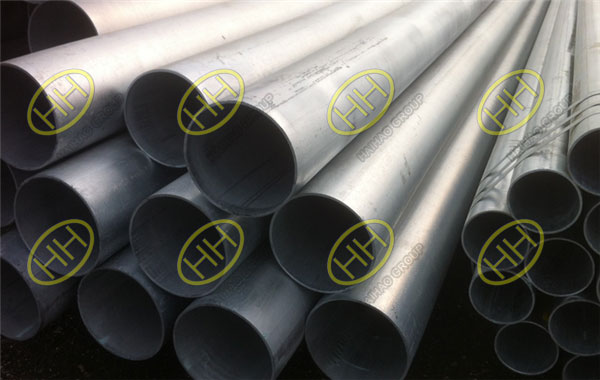Haihao Group is proud to announce that it has recently received an order from our respected Iranian customer, which includes a batch of seamless steel pipes made of carbon steel. According to the customer’s requirements, these steel pipes need to be hot-dip galvanized on the inner and outer surfaces and must comply with the strict provisions of ASTM A123 standards. The following is an introduction to the ASTM A123 standard and its important requirements.
ASTM A123 is a standard developed by the American Society for Testing and Materials (ASTM International) to evaluate the performance of hot-dip galvanized coatings on cast iron and steel products. Hot-dip galvanizing is a widely used anti-corrosion method that slows down the corrosion rate of iron by forming a layer of zinc on the surface of iron and steel products, effectively preventing it from contact with oxygen and moisture in the atmosphere.

ASTM A123 standards hot dip galvanized steel pipes
Main requirements of ASTM A123:
Uniform Appearance: The zinc coating shall have a uniform, continuous appearance without blisters, wrinkles, bubbles or obvious defects.
Adhesion: The zinc coating must adhere firmly to the surface of the iron or steel product and must not peel, peel or crack.
Coverage: The zinc coating shall cover the entire area of the surface of the iron or steel product and the coverage thickness shall meet the specified minimum requirements.
Chemical composition: The chemical composition of zinc coatings, especially the zinc content, must meet the minimum values specified in the standard.
The standard also specifies test methods for hot-dip galvanized coatings to evaluate the quality and thickness of the coating. The following are commonly used methods:
Wire pen test: Use a wire pen to mark the zinc coating and observe whether zinc peeling occurs. This preliminary test method is used to evaluate the adhesion of zinc coatings.
Straight line cut test: Make a straight cut on the zinc coating, then use tape to peel off the coating in the cut area and observe whether peeling occurs. This test method is used to evaluate the adhesion of zinc coatings.
Zinc coating thickness testing: Use non-destructive testing methods such as magnetic induction or coating thickness gauges to measure the thickness of zinc coatings.
According to ASTM A123, the zinc layer thickness of galvanized iron or steel pipe shall comply with the minimum values specified in the standard. Thicker zinc coatings provide greater protection, extend the life of the pipe, and provide superior corrosion protection.
Overall, ASTM A123 sets strict quality and thickness requirements for hot-dip galvanized iron and steel products. Compliance with this standard ensures excellent appearance, adhesion and thickness of zinc coatings, thereby improving the corrosion resistance of hot-dip galvanized iron and steel products. The zinc layer thickness specified in the standard guarantees minimum corrosion protection and can be adjusted to specific application needs.







